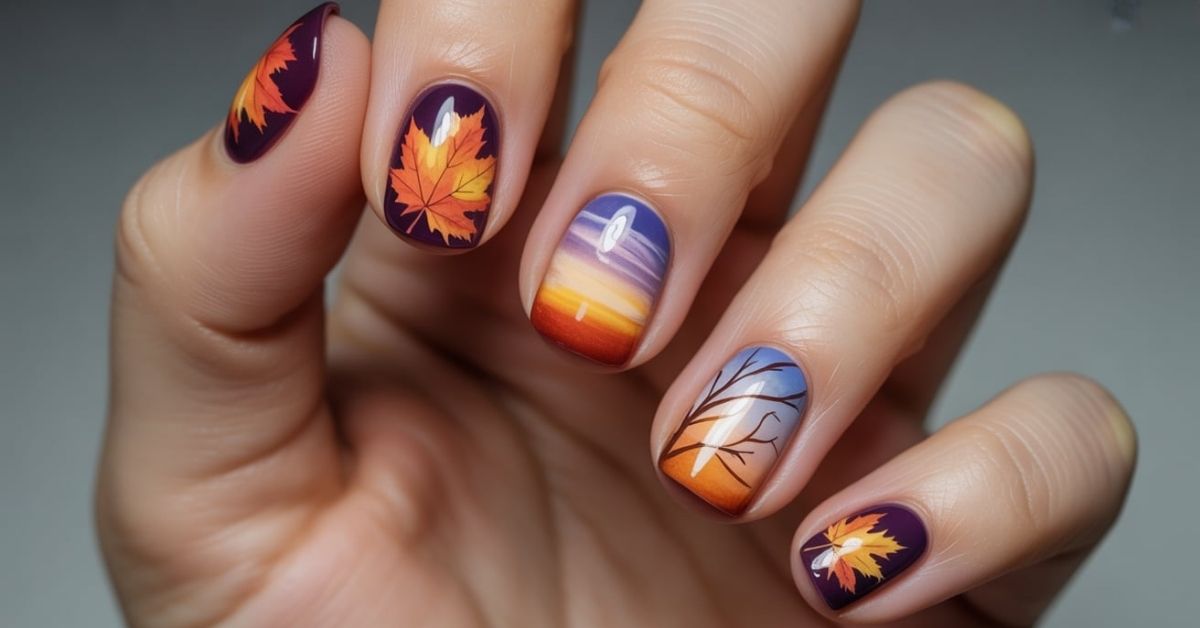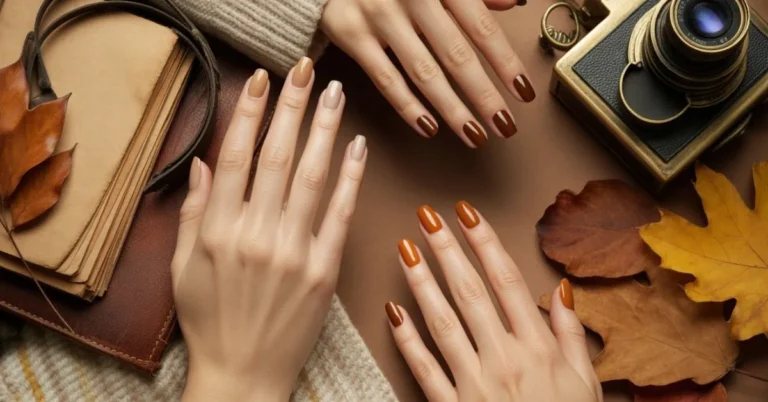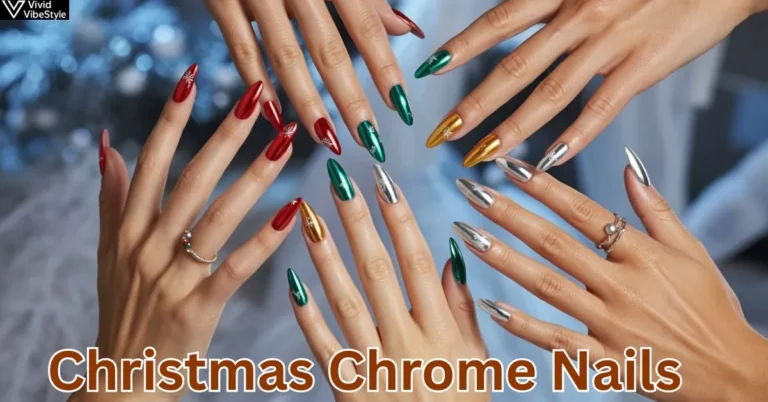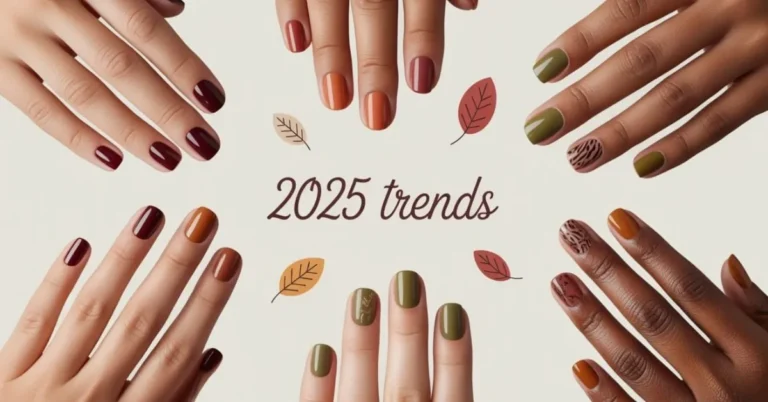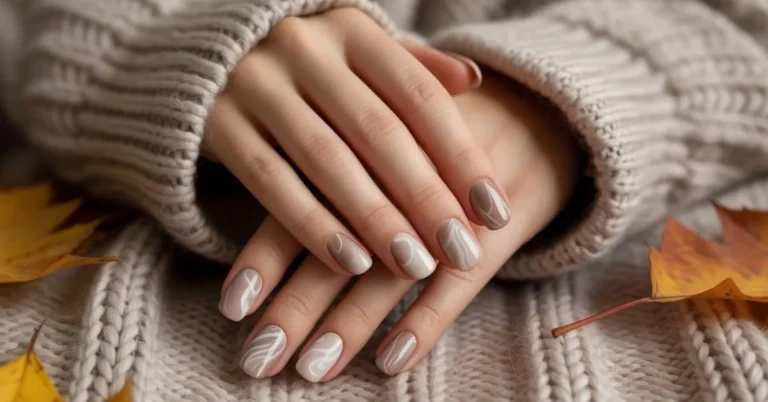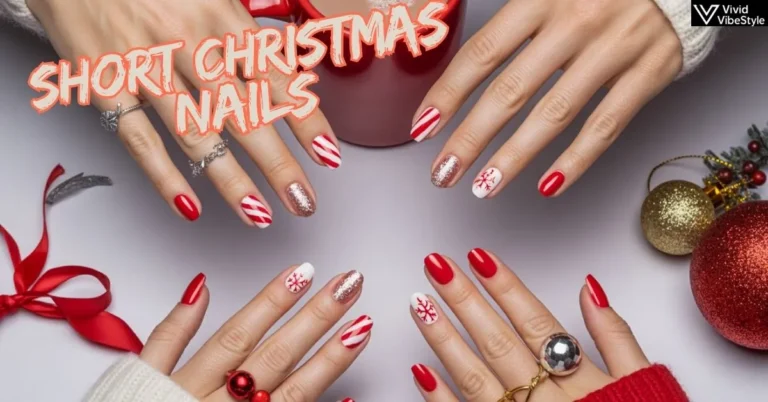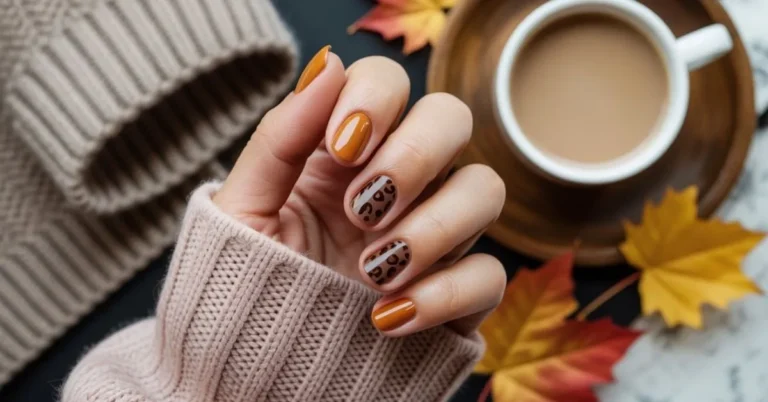Nature Inspired Nail Art Autumn: Transform Your Nails with Seasonal Beauty
Your manicure looks tired, and autumn’s arrival demands something fresh. You’re scrolling through endless nail inspiration, but everything looks either too complicated or outdated. The changing leaves outside are putting on nature’s most spectacular show, yet your nails remain stuck in summer mode. Here’s the frustrating truth: most nature inspired nail art autumn tutorials skip the essential techniques that make designs actually work on real nails.
But what if you could capture autumn’s breathtaking beauty right on your fingertips? This comprehensive guide reveals the exact methods professional nail artists use to create stunning fall nail designs that mirror nature’s seasonal transformation. You’ll discover trending techniques, master essential tools, and learn foolproof approaches that guarantee salon-worthy results at home.
What Makes Autumn Nature Nail Art So Captivating in 2025?
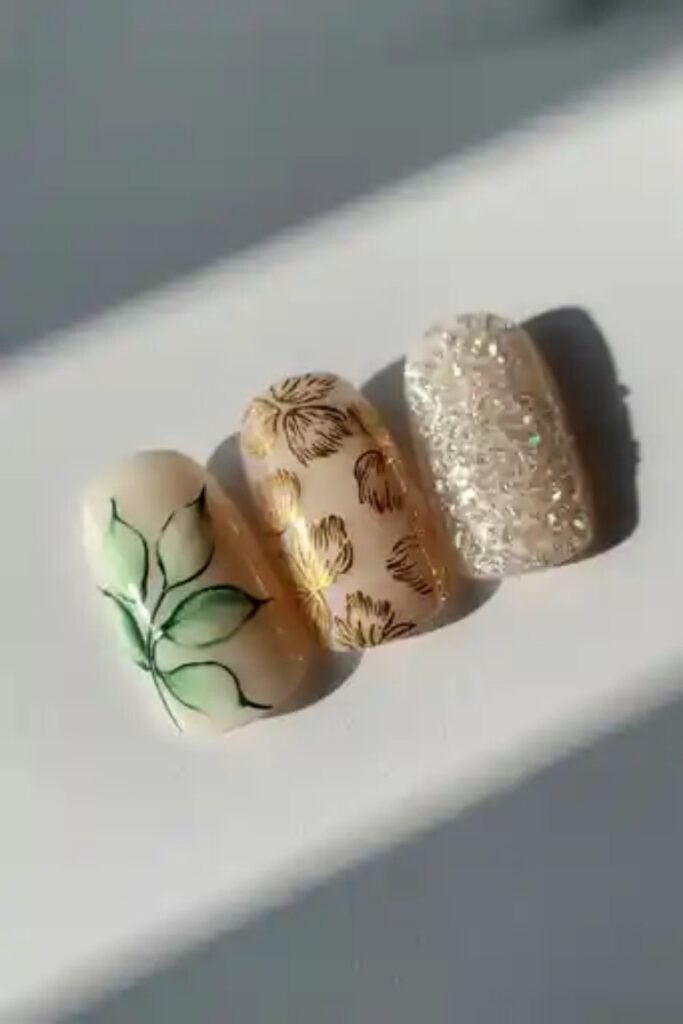
Nature inspired nail art autumn has evolved far beyond simple leaf nail designs. Autumn 2025 will see plenty of nature-themed nail designs. Expect to see detailed leaf and branch designs, often with a soft watercolour effect or intricate stamping. This year’s trends embrace sophisticated techniques that transform your nails into miniature works of art.
The appeal lies in autumn’s rich color palette and organic textures. Fall manicure ideas now incorporate everything from forest-inspired nails to delicate botanical nail art that captures the season’s essence. Professional nail artists are pushing boundaries with seasonal nail trends that blend traditional autumn colors with innovative application methods.
Modern autumn nail designs focus on creating depth and dimension. Instead of flat, painted leaves, today’s techniques use layering, gradient effects, and textural elements. Nature nail art has become more sophisticated, incorporating elements like tree bark textures, dewdrop effects, and realistic shadow work that makes designs appear three-dimensional.
How Do You Choose Perfect Colors for Autumn Nature Nail Designs?
Selecting the right color palette determines your autumn nail art success. Khaki, a cool-toned military green with a soft, muted finish, is a true autumn staple. It also works beautifully as a base for golden leaf nail art or a forest-inspired green gradient. Your color choices should reflect autumn’s natural progression from vibrant greens to warm earth tones.
Fall nail colors 2025 embrace unexpected combinations. Brown nails continue to dominate as the trending color for 2025, but it really comes into its own around autumn. Rich chocolate browns pair beautifully with copper accents, while deep burgundies complement golden yellows. The key is layering colors that exist naturally together in autumn landscapes.
Consider your skin tone when selecting seasonal manicure colors. Warm undertones shine with rust oranges, golden yellows, and warm browns. Cool undertones look stunning with berry purples, deep teals, and silvery greens. Nature inspired manicure designs work best when colors harmonize with your natural coloring.
Temperature contrast adds visual interest to autumn nail art ideas. Combine warm sunset oranges with cool sage greens, or pair deep burgundy with metallic gold. These contrasts mirror autumn’s natural interplay between warm sunlight and cool shadows, creating dynamic fall nail art that captures seasonal complexity.
Read More About : 50+ Pumpkin Spice Nails That Perfectly Capture Autumn’s Cozy Elegance in 2025
Which Essential Tools Transform Basic Manicures into Nature Masterpieces?
Professional-quality autumn nature nail art requires specific tools that most tutorials overlook. Your basic nail kit needs strategic additions to achieve the intricate details that make seasonal nail art truly spectacular. Investment in proper tools pays dividends in both time saved and results achieved.
Detailing brushes are non-negotiable for precision leaf nail art. You need at least three sizes: ultra-fine for delicate veins, medium for leaf outlines, and broad for color fills. Natural bristle brushes hold more paint and create smoother lines than synthetic alternatives. Nail art brushes should be cleaned immediately after use to maintain their precision tips.
Dotting tools create perfect dewdrops, berries, and texture effects. Multiple sizes allow versatility in your nature nail designs. You can substitute bobby pins or toothpicks in emergencies, but professional dotting tools provide consistent pressure and paint release that amateur substitutes cannot match.
Stamping plates revolutionize complex botanical nail art creation. Modern plates offer incredibly detailed leaf patterns, tree silhouettes, and organic textures. Quality stamping requires proper technique, but once mastered, it produces consistent, professional results that hand-painting cannot achieve in similar timeframes.
Specialized nail art accessories elevate your designs. Fine glitter adds realistic texture to autumn leaf nails. Foil transfers create metallic accents that catch light like real leaves. Water decals provide intricate details for those still developing freehand skills. These tools bridge the gap between beginner attempts and professional-level fall manicure results.
What Are the Step-by-Step Techniques for Creating Stunning Leaf Designs?
Mastering leaf nail designs requires understanding natural leaf structure and translating it onto the curved nail surface. Start with proper preparation clean, shaped nails with smooth base coats provide the canvas for detailed work. Autumn nail art demands patience, so allow adequate drying time between layers.
Begin with your base color selection. Neutral tones like nude, cream, or soft brown allow fall leaf nail art to pop without competition. Apply two thin coats rather than one thick layer for smooth, even coverage. Your base should completely dry before adding any nature inspired elements.
Create leaf shapes using the three-stroke method. First stroke forms the leaf’s center spine using your finest brush. Second and third strokes build the leaf body with slightly curved motions that mirror natural leaf shapes. This technique works for maple, oak, elm, or any seasonal leaf designs you choose to recreate.
Layering colors adds realistic depth to your autumn leaves nail art. Start with the lightest color as your base leaf tone. Add medium tones for shadows and depth, then finish with dark accents for definition. Real leaves contain multiple colors, so don’t limit yourself to single-tone applications.
Vein details separate amateur from professional fall nail art. Use your ultra-fine brush to add delicate vein patterns that follow natural leaf structure. Study real leaves for accuracy veins branch from the central spine in predictable patterns that you can replicate with practice.
How Can You Master Advanced Gradient and Ombré Effects?
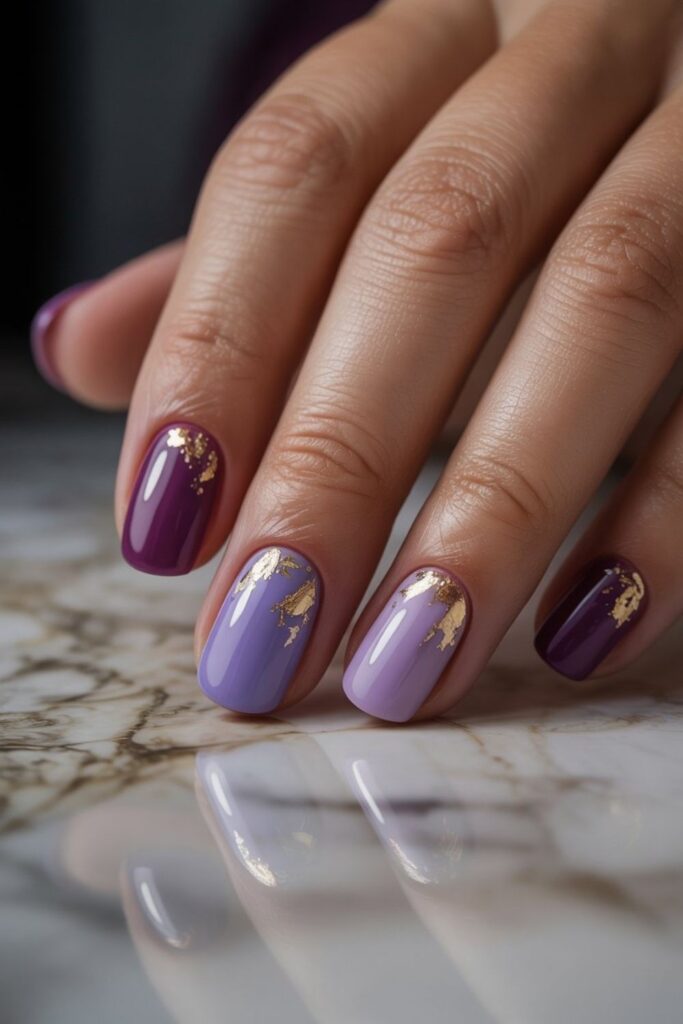
Gradient nail art creates seamless color transitions that mirror autumn’s natural color changes. You can use earthy tones like terracotta, olive, and mustard to create the base and add fine leaf designs in gold or copper foil for that extra touch of elegance. Professional autumn gradient nails require specific techniques that ensure smooth color blending without muddy transitions.
The sponge technique delivers the smoothest gradients. Apply your lightest color as the base, then use a makeup sponge to dab progressively darker colors toward the nail tip. Work quickly while polish remains workable, and blend colors while they’re still wet. Fall ombré nails created this way have seamless transitions impossible to achieve with brush techniques alone.
Vertical gradients work beautifully for forest nail art that mimics tree canopies. Apply green at the cuticle area, blending through brown in the middle, and finishing with gold or orange at the tips. This technique creates the illusion of looking up through autumn tree branches perfect for nature themed nail art.
Multi-color gradients capture autumn’s complexity. Use three to five colors that naturally appear together in fall foliage. Start with the lightest tone, then blend each successive color in thin layers. Seasonal gradient manicures require patience but create stunning effects that single-color applications cannot achieve.
Temperature considerations affect gradient success. Work in moderate temperatures where polish flows smoothly but doesn’t run. Too cold, and colors won’t blend; too warm, and they’ll become too fluid to control. Autumn nail art tutorials often skip this crucial detail that determines technique success.
Read More About : Cinnamon Nails: The Complete Guide to 2025’s Warmest Nail Trend
What Creative Techniques Bring Forest Elements to Your Nails?
Forest inspired nail designs go beyond simple leaves to capture entire woodland scenes. Tree silhouettes, bark textures, and woodland creatures create comprehensive nature scenes on nails that tell autumn stories. These advanced techniques require practice but produce show-stopping results.
Tree silhouette nail art creates dramatic focal points. Use black or dark brown polish with a fine liner brush to paint bare tree branches against sunset-colored backgrounds. Start with the main trunk, then add progressively smaller branches. Real trees branch in specific patterns study photos for realistic proportions in your woodland nail art.
Bark texture effects add tactile interest to forest nail designs. Create texture using a small sea sponge dabbed in brown polish over a lighter base. This technique mimics tree bark’s natural roughness. Seal texture effects with top coat to prevent snagging while maintaining visual interest.
Negative space techniques create sophisticated autumn forest nails. Leave portions of your base color visible while painting around them to suggest filtered sunlight through trees. This approach requires careful planning but produces elegant results that suggest rather than explicitly state natural elements.
Layered forest scenes build depth in your nature nail art. Paint background elements first sky colors, distant trees, or mountains. Add middle-ground elements like tree trunks or large branches. Finish with foreground details like fallen leaves or forest floor elements. Seasonal forest manicures created this way have dimensional quality that draws the eye.
Which 2025 Trends Are Reshaping Autumn Nature Nail Art?
2025 autumn nail trends embrace both minimalist sophistication and maximalist creativity. 3D texture on nails is the best new fidget toy. From subtle 3D polka dots to waves of swirling chrome, 3D texture is so gorgeous and so sensory. This year’s seasonal nail art incorporates tactile elements that add dimension beyond visual impact.
Minimalist nature designs focus on single-element perfection rather than complex scenes. One perfectly executed leaf, a simple branch silhouette, or subtle gradient effects create sophisticated autumn nail art suitable for professional environments. These designs prove that nature inspired manicures don’t require elaborate complexity to make strong style statements.
Chrome and metallic accents modernize traditional fall nail designs. Copper chrome mimics autumn’s metallic light quality, while gold accents suggest sunlight filtering through colored leaves. Metallic autumn nails catch and reflect light in ways that matte finishes cannot, adding luxury to seasonal manicure ideas.
Mixed media applications combine traditional polish with gel, chrome powders, and decorative elements. 3D autumn nail art might incorporate actual dried flowers, metallic foils, or textured powders that create realistic effects impossible with polish alone. These techniques require investment in additional materials but produce truly unique results.
Sustainable nail art reflects growing environmental consciousness. Eco-friendly autumn nails use non-toxic polishes, biodegradable glitters, and techniques that minimize waste. This trend doesn’t compromise creativity instead, it challenges artists to innovate within environmental constraints, often producing more creative solutions.
How Do You Execute Professional-Quality Botanical Details?
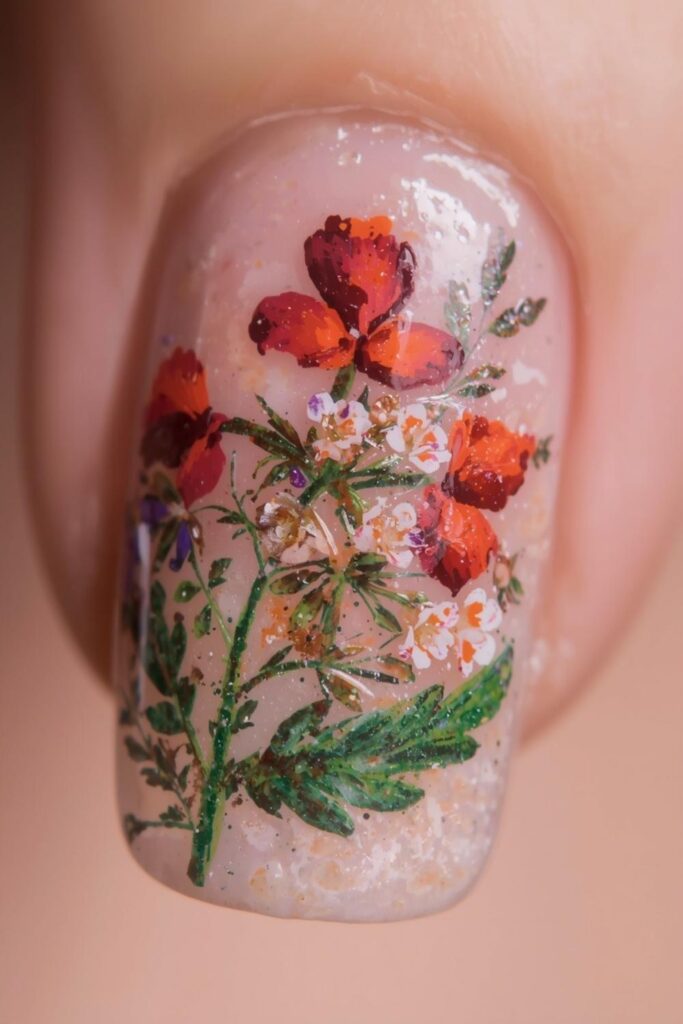
Botanical nail art demands understanding plant structure and translating it accurately onto nail surfaces. Professional nature nail artists study botany to ensure their autumn botanical designs reflect real plant anatomy rather than generic interpretations. Accuracy elevates amateur attempts into professional-quality work.
Flower petal techniques create realistic blooms on autumn floral nails. Each petal requires individual attention varying sizes, slight color differences, and natural positioning that suggests organic growth rather than mechanical repetition. Seasonal floral nail art benefits from studying real flowers’ natural variation and imperfection.
Stem and branch proportions follow natural rules that your botanical nail designs should respect. Main stems are thicker than branches, which taper as they extend. Leaves attach at nodes, and growth follows predictable patterns. Professional botanical nail art respects these natural laws even in stylized interpretations.
Color accuracy in nature inspired botanical art requires mixing custom shades that match real plant colors. Pure green rarely appears in nature most plant greens contain yellow, blue, or brown undertones. Autumn botanical manicures benefit from observing real plants and mixing polish colors that capture nature’s subtle complexity.
Texture variations add realism to botanical nail art designs. Leaves have different surface textures glossy, matte, fuzzy, or waxy that you can recreate using different top coat applications or texturing techniques. Advanced botanical nail art incorporates these subtle details that distinguish professional from amateur work.
What Are the Most Effective Seasonal Color Combinations?
Autumn color palettes extend far beyond traditional orange and brown combinations. This shade was huge last year referring to burgundy tones that dominated 2024’s fall nail trends. Understanding color theory helps create seasonal nail art combinations that feel fresh rather than predictable.
Complementary color schemes use opposites on the color wheel for maximum impact. Orange and blue, red and green, or purple and yellow create dynamic tension in autumn nail designs. These combinations appear frequently in natural fall settings think orange leaves against blue sky or red berries among green pine needles.
Analogous combinations use neighboring colors for harmonious fall manicure ideas. Red, orange, and yellow create warm gradients perfect for sunset nail art. Blue, purple, and green work beautifully for twilight autumn designs that capture evening’s cooler tones.
Triadic color schemes use three evenly spaced colors for balanced seasonal nail art. Red, yellow, and blue provide primary foundations for complex autumn nature designs. These combinations allow for varied elements while maintaining visual cohesion across your fall nail art design.
Monochromatic approaches explore single colors in various tints, shades, and tones. All-brown autumn nail art might include cream, tan, chocolate, and espresso for sophisticated seasonal manicures that feel cohesive yet varied. Nature inspired monochromatic designs often prove more striking than multi-color alternatives.
Read More About : 40 Stunning Earthy Brown Manicure Ideas That Define 2025’s Warmest Nail Trend
How Can Beginners Build Skills for Complex Nature Designs?
Beginner autumn nail art requires systematic skill building rather than jumping directly into complex designs. Start with single-element practice perfect one leaf before attempting entire forest scenes. Easy nature nail art foundations support more advanced techniques as skills develop.
Practice sheets accelerate skill development more effectively than practicing on your actual nails. Print nail templates and practice autumn leaf techniques, branch patterns, and color blending on paper first. This approach saves time and money while building muscle memory for brush control.
One-element mastery builds confidence before attempting complex seasonal nail art. Spend sessions focusing exclusively on leaf shapes, then stem techniques, then color blending. Progressive autumn nail tutorials that build skills systematically produce better results than attempting everything simultaneously.
Tool familiarity develops through dedicated practice time. Each nail art brush behaves differently, and each autumn nail color has unique flow characteristics. Spend time learning your tools’ capabilities before attempting detailed nature inspired designs.
Reference photo collections guide realistic autumn nail art creation. Collect photos of real leaves, bark textures, and autumn scenes for accurate reference. Professional nature nail artists constantly reference real nature rather than other nail art for authentic inspiration in their seasonal designs.
What Advanced Techniques Create Texture and Dimension?
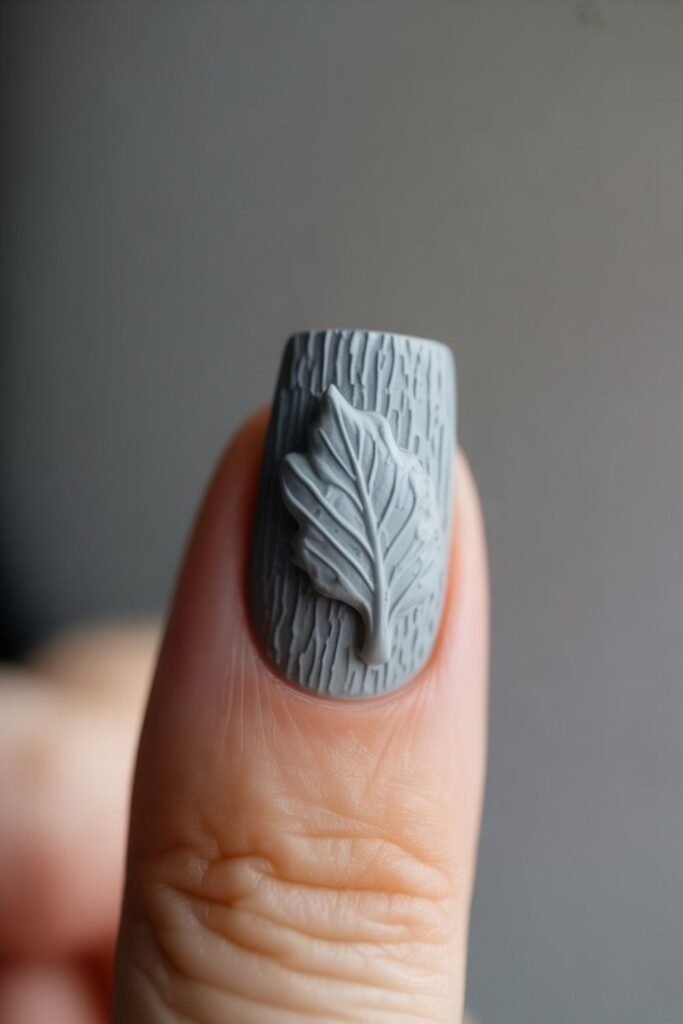
Textural nail art separates truly professional autumn designs from amateur attempts. Real nature includes varied textures smooth leaves, rough bark, fuzzy seed pods that you can recreate on nails using specialized techniques. 3D autumn nail art requires understanding how to create tactile interest within nail art’s constraints.
Stippling techniques create leaf surface textures using small, repeated dabbing motions with various brush types. Natural sponges create organic textures perfect for autumn tree bark effects. Fan brushes produce fine texture lines ideal for grass or pine needle nail art. Each tool produces distinct texture signatures.
Layered transparency effects create depth in autumn nature nail art. Apply translucent colors in multiple layers to suggest overlapping leaves or filtered sunlight. Professional autumn nail designs often use five or more transparent layers to achieve realistic depth impossible with single-application techniques.
Raised texture applications use specialized products to create actual dimensional effects on 3D autumn nails. Textured base coats, fiber gels, and sculpting mediums build actual height variations. These techniques require practice but produce tactile autumn nail art that engages multiple senses.
Light manipulation through strategic color placement creates the illusion of dimension even on flat surfaces. Understanding light’s behavior on curved nail surfaces allows realistic autumn nail art that suggests three-dimensional forms through careful highlight and shadow placement.
How Do You Incorporate Trending Autumn Elements?
2025 autumn nail trends incorporate specific seasonal elements that define this year’s nature inspired nail art. For those who dare, add delicate floral nail art for an artistic touch suggesting continued floral integration even in autumn designs. Understanding trending elements helps create contemporary seasonal nail art.
Mushroom motifs have gained popularity in botanical autumn nail art. These designs range from whimsical cartoon versions to realistic mycological studies. Mushroom nail art works particularly well in woodland theme manicures that capture forest floor ecosystems in miniature detail.
Pine cone patterns offer geometric structure within organic autumn designs. Their spiral patterns provide interesting technical challenges while maintaining natural themes. Pine cone nail art works beautifully in rustic autumn manicures or as accent elements in complex forest scenes.
Acorn designs symbolize autumn’s preparation themes and work well in harvest-themed nail art. Simple acorn shapes are beginner-friendly, while detailed versions with realistic caps and grain patterns challenge advanced artists. Acorn nail art pairs beautifully with oak leaf designs for cohesive autumn woodland themes.
Berry clusters add color pops to autumn nature nail art. Whether realistic holly berries, abstract color dots, or stylized grape clusters, berry elements provide opportunities for dotting tool practice while maintaining seasonal appropriateness in fall nail designs.
Which Professional Tips Ensure Long-Lasting Results?
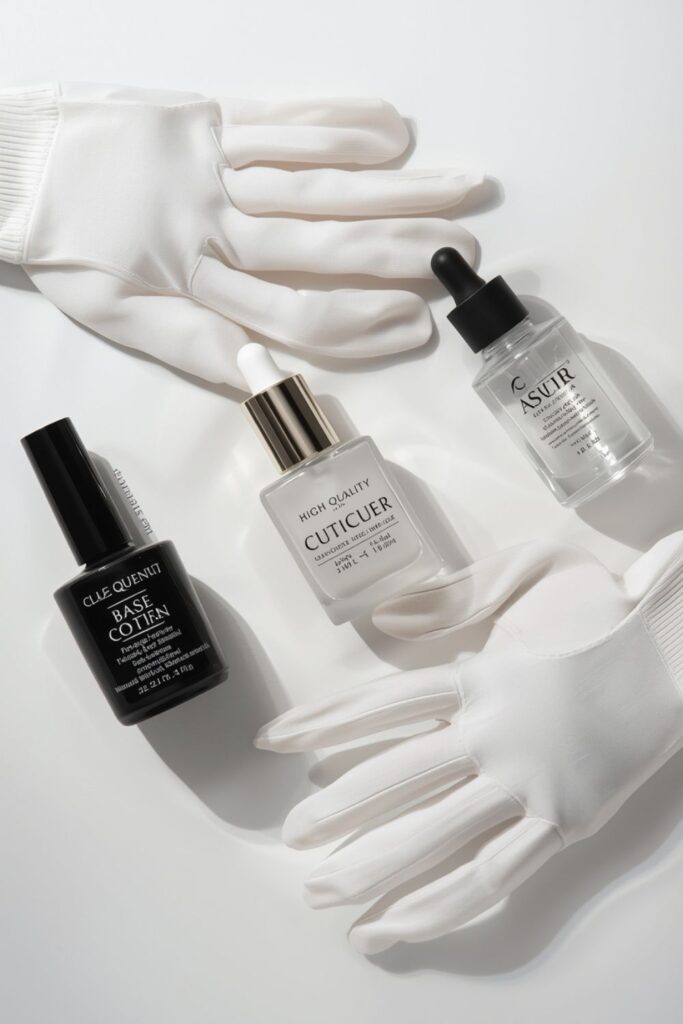
Durable autumn nail art requires attention to application techniques that amateur tutorials often skip. Professional longevity depends on proper preparation, application sequence, and sealing methods. Long-lasting seasonal manicures justify the time investment in detailed nature inspired designs.
Base coat selection affects everything that follows. Use base coats designed for nail art that provide smooth surfaces and prevent staining. Ridge-filling bases create ideal canvases for detailed autumn nail art by eliminating natural nail texture that can interfere with fine details.
Thin layer applications prevent bubbling, extend drying time, and improve durability. Multiple thin coats create smoother finishes than single thick applications. Professional autumn nail art patience during application prevents problems that require complete restart.
Proper curing times between layers prevent smudging and ensure proper adhesion. Each layer should feel completely dry before adding subsequent elements. Rushed autumn nail art rarely achieves professional appearance or longevity regardless of skill level.
Quality top coat selection preserves detailed nature nail art from chips and fading. Fast-dry top coats often compromise durability for speed. Professional autumn manicures use high-quality top coats applied in thin, even layers that enhance rather than obscure underlying artwork.
Maintenance techniques extend autumn nail art lifespan. Daily cuticle oil application keeps nail plates flexible, preventing cracks that damage designs. Glove protection during cleaning activities prevents premature chip damage to detailed seasonal nail art.
Read More About : Ombré Fall Nails: 2025’s Ultimate Guide to Gradient Autumn Manicures
Frequently Asked Questions
How long does nature inspired autumn nail art typically last?
With proper preparation and quality products, detailed autumn nail art lasts 7-10 days with minimal chipping. Professional application techniques and high-quality top coats extend wear time, while daily hand use and maintenance habits affect longevity. Seasonal manicures with intricate details may require touch-ups around day 5-7 to maintain crisp appearance.
What’s the best base color for autumn leaf designs?
Neutral base colors like nude, cream, or soft brown showcase autumn leaf nail art most effectively by providing contrast without competition. Darker bases can work but require careful color selection to ensure leaf designs remain visible. Professional autumn nail artists often prefer translucent bases that allow natural nail color to influence the overall palette.
Can beginners successfully create detailed nature nail art?
Beginner-friendly autumn nail art absolutely exists, though complex designs require skill building. Start with simple single-leaf designs, practice basic brush techniques, and gradually increase complexity. Easy autumn nail tutorials focus on achievable results that build confidence and skills systematically rather than attempting professional-level complexity immediately.
Which nail shapes work best for nature-inspired designs?
Oval and almond nail shapes provide optimal canvases for detailed nature nail art because their curves mimic natural forms. Square shapes work well for geometric autumn designs, while stiletto shapes offer dramatic length for complex forest scenes. Short natural nails can accommodate simplified nature themes with careful design scaling.
How do you fix mistakes in detailed autumn nail art?
Nail art correction techniques vary by mistake type and timing. Wet polish mistakes can be fixed with cleanup brushes dipped in acetone. Dried autumn nail art mistakes often require partial removal and reapplication. Professional nail artists prevent most mistakes through careful planning and quality tool investment.
Conclusion
Nature inspired nail art autumn transforms ordinary manicures into wearable seasonal celebrations that capture fall’s breathtaking beauty. The techniques, color combinations, and design approaches covered here provide comprehensive foundations for creating professional-quality autumn nail designs that rival salon work. Your mastery of these methods opens unlimited creative possibilities for expressing seasonal style through detailed nature nail art.
Remember that autumn nail art mastery develops through consistent practice and experimentation with the techniques outlined above. Start with simpler fall leaf designs and gradually incorporate advanced methods like gradient effects, textural techniques, and 3D elements as your confidence grows.
The seasonal nature of autumn manicures provides annual opportunities to refine skills and explore new creative directions in your nature inspired nail art journey.

